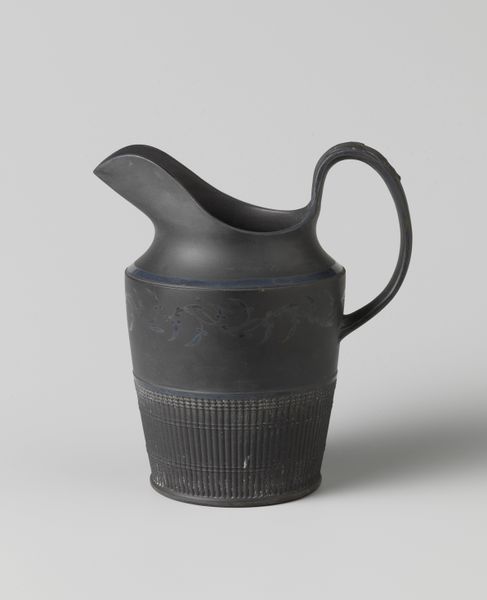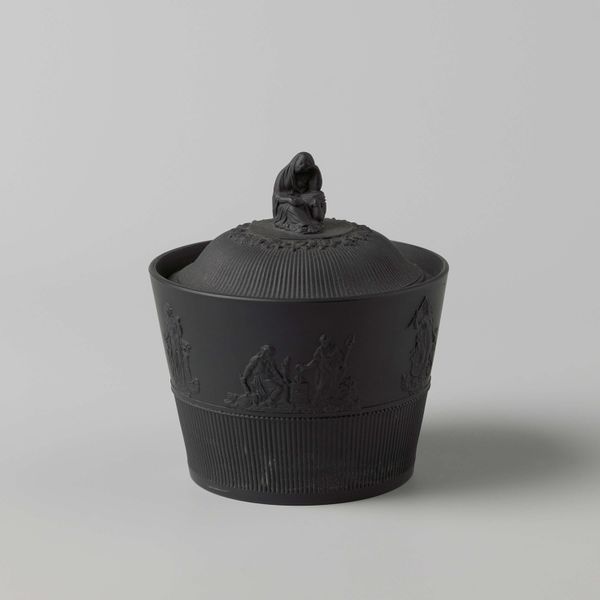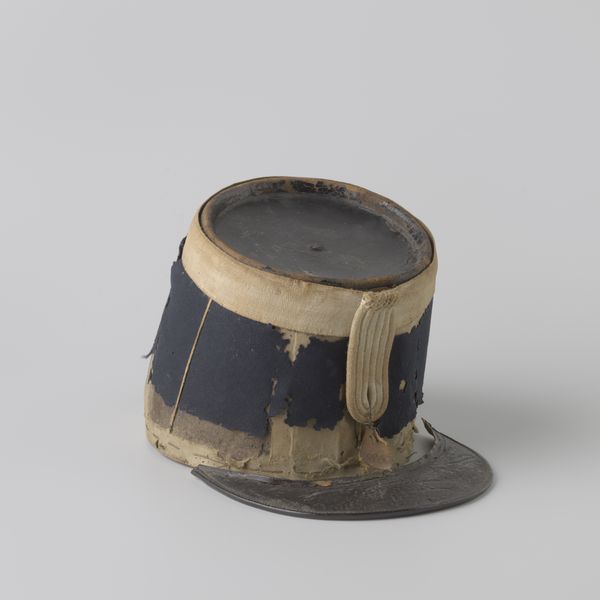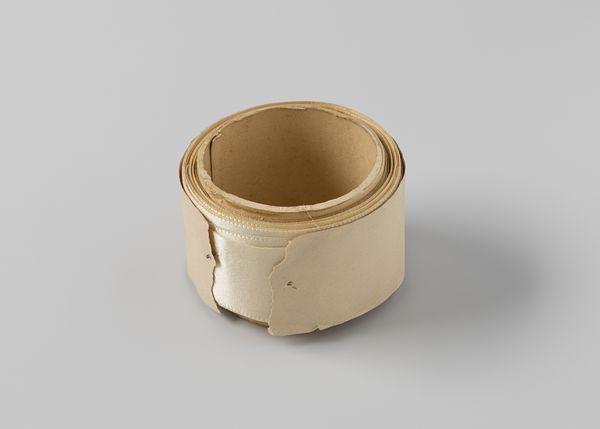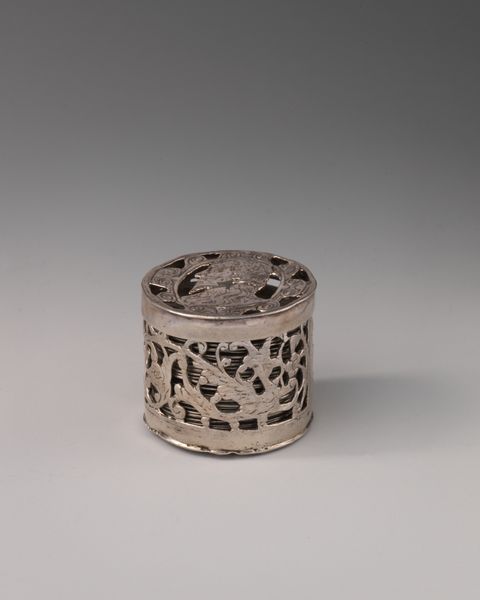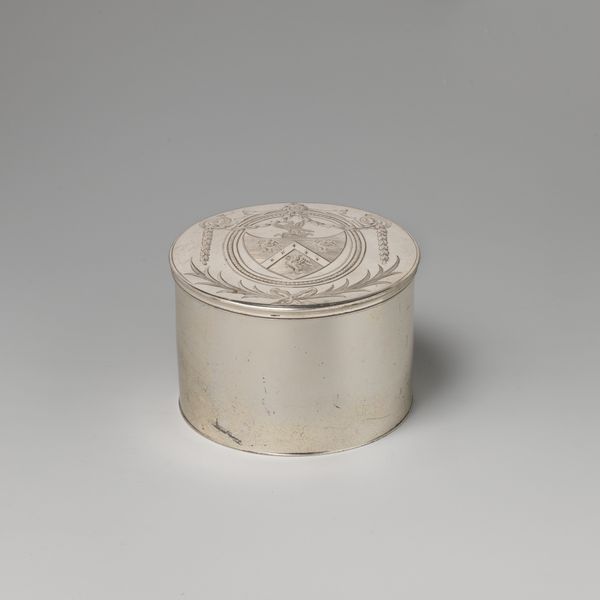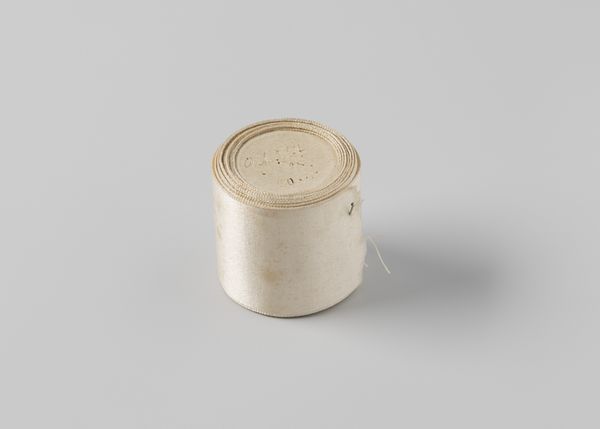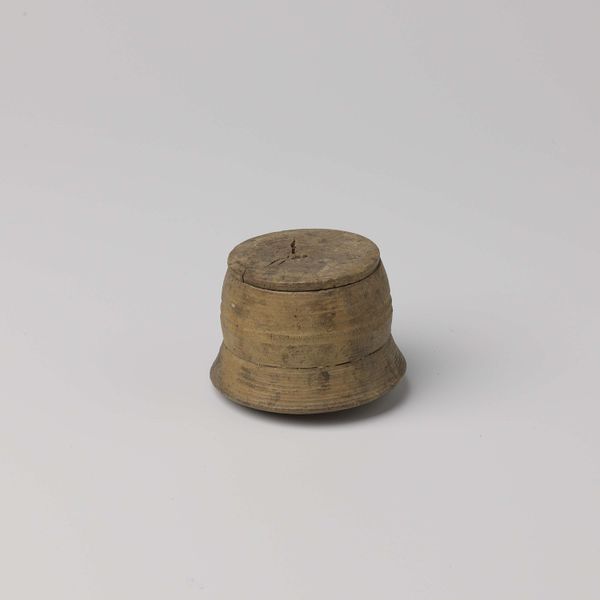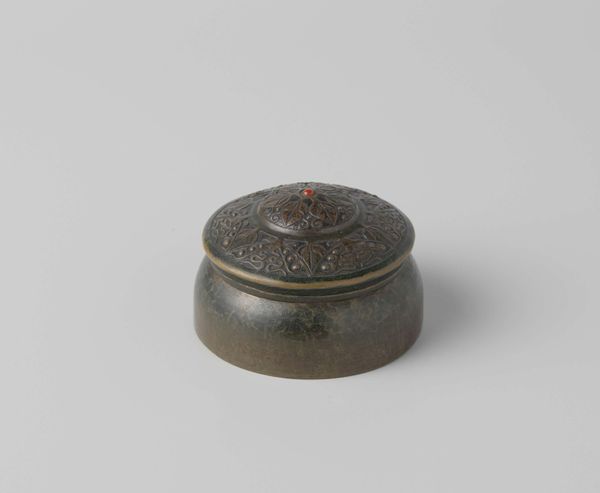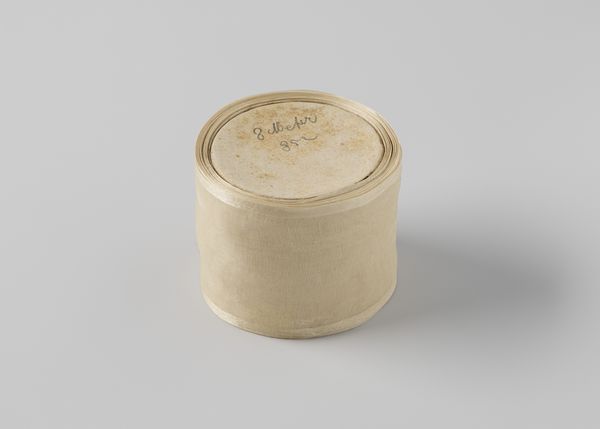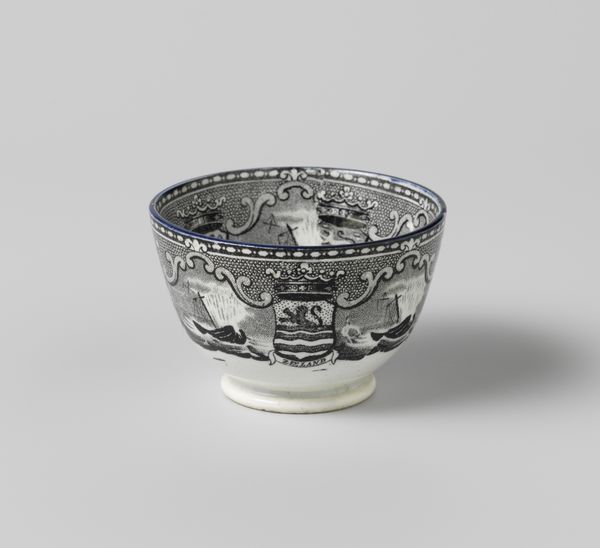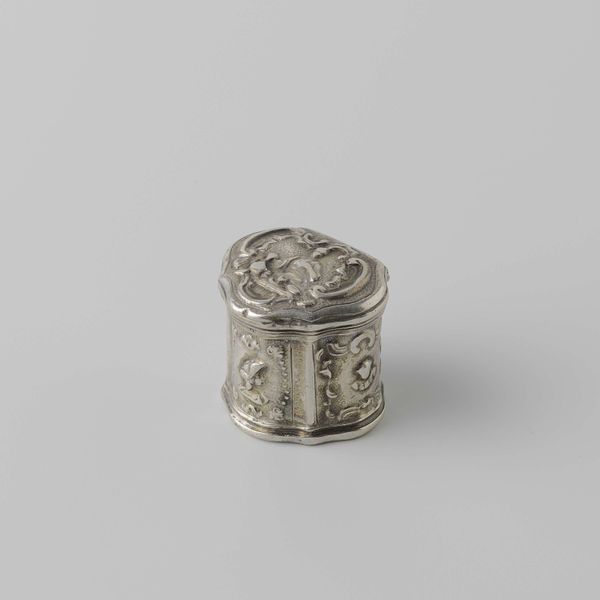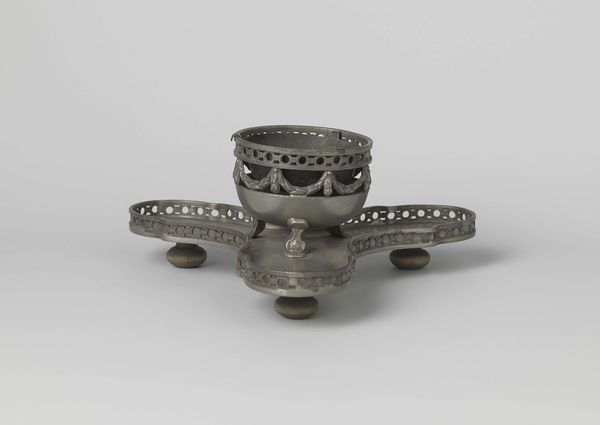
ceramic, earthenware
#
neoclassicism
#
ceramic
#
earthenware
#
decorative-art
Dimensions: diameter 9.9 cm, height 5.5 cm
Copyright: Rijks Museum: Open Domain
Editor: So, here we have what’s described as a “Deksel van aardewerk,” or earthenware lid, made sometime between 1790 and 1825. The dark, almost somber colour and the figure on top make me wonder about its purpose and place in society at that time. What do you see in this piece, and what stories might it tell us? Curator: Well, looking at this object through a contemporary lens, several things jump out. Its Neoclassical design points towards an aspiration for order and refinement, which were key values during the Enlightenment. But the solemn colour and what appears to be a Black figure on top create a tension. How might the politics of race, class, and empire be intertwined with decorative arts like this at the time? Editor: That’s fascinating! I hadn't immediately thought of it in terms of those power dynamics. Is the presence of a Black figure unusual for decorative objects from that period? Curator: Not necessarily "unusual," but it invites us to question the representation and lived experiences of marginalized people. Was it mere exoticism? Or could it point towards a deeper, albeit complicated, engagement with Black communities? What symbolic role might the figure play for the owners and viewers of this object? Editor: So it becomes a prompt, a way to explore these intersectional themes and the colonial context… I’m seeing it differently now. It’s not just a lid; it’s a document. Curator: Exactly. By situating it within the historical discourse around race and representation, we begin to uncover its complexity and relevance today. It reflects the period and society from whence it came, asking important questions. Editor: Thanks. That's given me a whole new way of looking at everyday objects and the stories they hold. Curator: Indeed. Questioning aesthetics in their cultural context helps us engage with our past and see our present with new clarity.
Comments
No comments
Be the first to comment and join the conversation on the ultimate creative platform.
